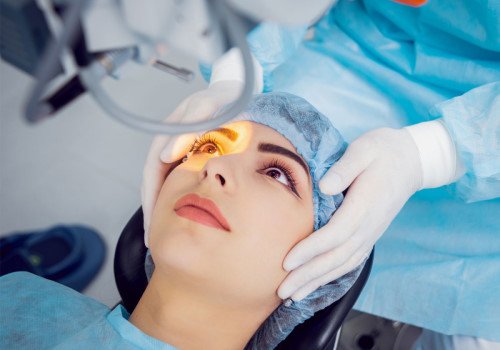
Oculoplasty & Squint Correction
Squint and Oculoplasty
Squint, also called strabismus, is when the eyes are misaligned and do not focus on the same point. This causes double vision and affects depth perception. Oculoplasty involves surgeries to correct eyelid problems, tear duct issues, and eye socket abnormalities.
Symptoms: Misaligned eyes, double vision, eye strain, headaches, and difficulty focusing.
Treatment: Squint surgery helps realign eyes for better vision and appearance. Oculoplasty treats droopy eyelids, repairs injuries, and removes tumors near the eyes.
Prevention: Early diagnosis and treatment in children are essential. Regular eye exams and prompt care improve eye health and prevent vision loss.


Squint and Oculoplasty Treatment
Squint (Strabismus) is a misalignment of the eyes, which can lead to double vision, poor depth perception, or lazy eye in children. Treatment includes corrective glasses, vision therapy, eye patching, and often eye muscle surgery to realign the eyes.
Oculoplasty refers to cosmetic and reconstructive surgery around the eyes. It treats conditions like droopy eyelids (ptosis), eyelid malpositions, tear duct obstruction, eye tumors, and orbital injuries.
Treatment involves minor to advanced surgeries, often performed on an outpatient basis.
Early evaluation ensures better outcomes for both functional and aesthetic improvements. Regular follow-up with an oculoplasty specialist helps maintain long-term eye health and appearance.
Squint and Oculoplasty Overview
Squint (Strabismus) is a condition where both eyes do not align properly and look in different directions. It can be constant or occasional, affecting depth perception and vision development, especially in children.
Types: Esotropia (inward), Exotropia (outward), Hypertropia (upward), and Hypotropia (downward).
Causes: Muscle imbalance, nerve damage, congenital issues, refractive errors, trauma, or neurological conditions.
Treatment: Includes corrective glasses, patching therapy, vision therapy exercises, or surgical realignment of eye muscles.
Prevention: Regular comprehensive eye exams (especially if at risk), managing health conditions like diabetes and blood pressure, using protective eyewear, and following prescribed treatments strictly.

Common Asked Questions - Squint and Oculoplasty
Answers to Your Most Common Eye Health Concerns
- Squint can be caused by muscle imbalance, nerve problems, congenital conditions, trauma, refractive errors, or neurological disorders. Early diagnosis in children is crucial for effective treatment.
- Treatment for squint includes glasses, vision therapy, eye patching, and surgical correction to realign the eyes. Oculoplasty involves surgeries to correct eyelid problems, tear duct blockages, and orbital abnormalities.
- Recovery usually takes 1 to 2 weeks for initial healing, but full stabilization of eye alignment or eyelid function may take several weeks. Follow-up visits are essential for optimal results.
- While some causes are congenital, early eye exams during infancy and childhood can detect squint early. Timely treatment helps prevent vision problems like amblyopia (lazy eye).
- Like all surgeries, oculoplasty carries risks such as infection, bleeding, scarring, or incomplete correction. However, these are rare, and thorough preoperative assessment minimizes complications.
